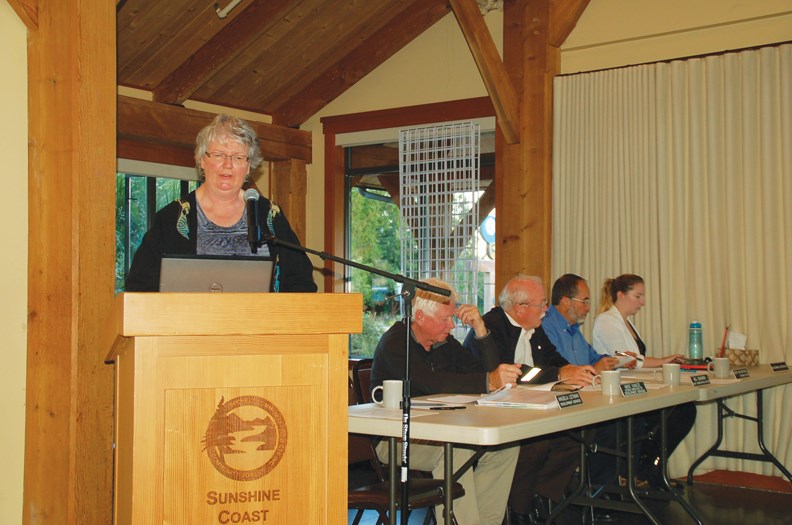There was no public support at a Sept. 9 public hearing for a bylaw amendment that would place rules and restrictions around future medical marijuana grow operations in Sechelt.
The bylaw amendment (bylaw No. 25-266, 2015) seeks to add definitions for cannabis, horticulture, marijuana, medical marijuana, medical marijuana cultivation, medical marijuana production and medical marijuana research and development to Sechelt’s zoning bylaw No. 25, 1987.
In addition to defining the terms, the bylaw amendment would impose certain zoning requirements on agricultural and industrial lands where medical marijuana production, cultivation, research and development would be allowed.
Zoning requirements pitched in the bylaw amendment would see cultivation allowed on RR-2 lots of five hectares or more in the Agricultural Land Reserve (ALR) that have no schools within one kilometre and no developed parks within 500 metres.
Medical marijuana production and/or research and development would be allowed on I-3, I-5, I-6 and I-7 lots of 4,000 sq. metres or more with the same distances to schools and parks.
The bylaw amendment also details other requirements for specific lots, including the maximum height of structures allowed at each site and the maximum lot coverage allowed.
Council gave first reading to the bylaw on July 8 and then referred it out for comments from community associations, the regional district, the RCMP, the Sechelt Volunteer Fire Department and Vancouver Coastal Health.
The community was invited to have its say on Sept. 9 at 7 p.m. at the Seaside Centre during a public hearing on the subject. A sparse group of about 20 people showed up and no one spoke in favour of the proposed bylaw amendment.
Some thought the proposed parcel sizes weren’t large enough, while others worried the bylaw left an opening for growers to put two lots together to meet the size requirements.
Concerns around water use, odour, waste management and enforceability of rules on ALR lands also came up during the meeting.
Several speakers questioned the timing of the bylaw amendment, when there is a legal challenge of Canada’s Marijuana for Medical Purposes Regulations (MMPR) in the works and a new federal government could change those regulations or abandon them all together and legalize the drug.
“We’re providing zoning for the future, in which case we expect, depending on the outcome of the election and things of that nature, that there will be a new medical marijuana bylaw at the federal level and that would apply to this,” Sechelt Mayor Bruce Milne said at the meeting.
He noted that until the legal challenge is settled, current producers under the old Medical Marijuana Access Regulations (MMAR) can continue to operate.
District of Sechelt staff will now compile the feedback from the public hearing, the completed referrals and any written responses from the public into a staff report that will likely come to council on Oct. 7 during its regular council meeting.
After receiving the report, council will consider second and third readings of the proposed bylaw.
“In doing so they can either give the readings, they can amend the bylaws and give readings, they can send it out for further community consultation, or they can refuse the bylaw entirely,” said Sechelt planner Angela Letman.
If council refuses the bylaw, Letman noted, then “we have no medical marijuana zoning in the District of Sechelt except we have a definition of horticulture, which implies that medical marijuana cultivation is permitted.”



